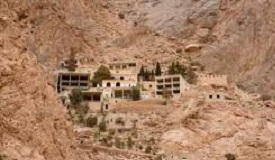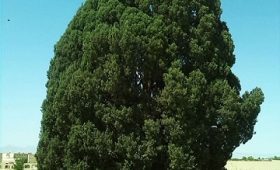The Chak Chak Ziyaratgah (also known as Pir Sabz or Chacko) near Ardakan in Yazd province is one of the most significant pilgrimage sites for Zoroastrians worldwide. The location is sacred, with its remarkable historical and spiritual significance tied to the Zoroastrian community.
Key Points about Chak Chak:
- Religi<p><p align=”justify”>
ous Importance
: Chak Chak is a major spiritual site for Zoroastrians. It is believed to be the place where a Sassanid princess, Nik Banu, sought refuge during the fall of the Sassanian Empire and disappeared. She is said to have vanished into the mountain and reappeared in the dreams of a shepherd, who was instructed to build a shrine on the spot. - Significance: The name “Chak Chak” comes from the continuous dripping of water from the rock walls of the mountain, which is considered miraculous. Water flows from the cracks in the mountain, forming a pool at the base, and the surrounding vegetation adds to the mystique of the place.
- Pilgrimage: Zoroastrians from around the world come to Chak Chak, especially during specific festivals such as Mehrgan, which is celebrated with traditional rituals, prayers, food offerings, and gatherings. The place is seen as a symbol of unity for the Zoroastrian community.
- Access: Located about 43 kilometers east of Ardakan, this sacred site can be accessed via the Yadz-Mehrabad highway and is situated amidst the desert mountains, making it a visually striking and peaceful place to visit.
Rituals and Ceremonies:
Chak Chak hosts religious ceremonies annually, especially from June 24 to June 28, when Zoroastrians perform specific rituals, including prayer services, burning incense, and preparing traditional foods like bread offerings. The area also serves as a gathering place for the community, where Zoroastrians from across Iran and abroad join in the ceremonies.
The Architecture:
The shrine is located on the side of a mountain and features simple rooms for pilgrims to stay in. The oldest rooms date back to the Qajar period, adding a historical layer to the site.
Visitors to place can also explore other attractions in the area, including the historic town of Ardakan, which has its own share of cultural heritage.
Visiting place is not just about exploring a religious landmark; it’s about experiencing a unique blend of history, culture, and spirituality in the heart of Iran’s desert region.




